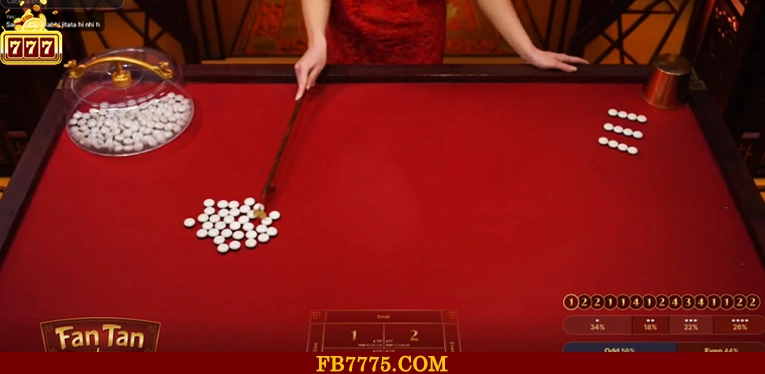Learn what the 1-3-2-6 betting strategy is, how the 1 3 2 6 system works step by step, where to use it (baccarat, roulette, craps), bankroll rules, pitfalls, and expert tips—plus FAQs.

If you’ve ever asked, “What is the 1 3 2 6 betting strategy?”, you’re already thinking like a disciplined player. The 1-3-2-6 betting strategy is a positive progression betting system designed to press your wins during short favorable runs and cap your risk within a strict four-bet cycle. Unlike systems that chase losses, the 1 3 2 6 system increases stakes only after a win, making it naturally more conservative than negative progression approaches. While no staking plan can change the house edge, a well-structured betting progression system can help organize play, reduce emotional decisions, and manage variance with a clear set of rules.
In this guide, we’ll define what the 1 3 2 6 betting strategy actually is, walk through step-by-step examples, compare it to alternatives like 1-3-2-4, and show you where it fits best—especially baccarat, even-money roulette bets, and the craps pass line. We’ll also cover bankroll management, table limits, common mistakes, and responsible gambling tips, so you can decide whether the 1-3-2-6 betting strategy supports your goals and style.
What is the 1-3-2-6 Betting Strategy?
At its core, the 1-3-2-6 betting strategy is a four-step positive progression that stakes 1 unit, then 3 units, then 2 units, and finally 6 units, but only advancing to the next step after each win. Any loss immediately resets the sequence back to the initial 1 unit. This is why what is the 1 3 2 6 betting strategy? is often answered with: it’s a way to convert short streaks into controlled profit while keeping your downside contained within a small cycle.
- Start at 1 unit. If you lose, you’ve lost 1 and you reset.
- Win? Move to 3 units. Lose here and you reset with a net -1 cycle. Win and you’re up +4 cumulatively.
- Third step is 2 units. If you lose now, you still keep +2 net from the first two wins.
- Fourth step is 6 units. Win and your cycle profit becomes +12. Lose and you land at 0 net for the full four-bet cycle.
This structure answers what is the 1 3 2 6 betting strategy? in practical terms: a press-your-wins system that safeguards against deep drawdowns, because you never add after a loss and you lock modest profit after two consecutive wins.
How the 1-3-2-6 Sequence Works (Step-by-Step)
To fully grasp what is the 1 3 2 6 betting strategy?, follow the canonical flow:
- Bet 1 unit
- Win → proceed to 3 units (cumulative +1).
- Lose → reset to 1 unit (cycle -1).
- Bet 3 units
- Win → proceed to 2 units (cumulative +1 +3 = +4).
- Lose → reset (cycle total -(1+3) = -4 from the path of this attempt).
- Bet 2 units
- Win → proceed to 6 units (cumulative +4 +2 = +6).
- Lose → reset, but keep +2 net for the cycle (since you won 1 and 3 before losing 2).
- Bet 6 units
- Win → +12 net for the four wins (1+3+2+6).
- Lose → 0 net for the entire cycle (you give back the +6 you had).
The beauty of the system—and a key reason people ask “What is the 1 3 2 6 betting strategy?”—is that after two wins, you are protected: a loss on the third step still leaves you +2. After three wins, you face a meaningful choice: take the last step for a chance at +12, accepting that a loss there erases the cycle’s profit to break-even.
Concrete Examples with Math
Understanding what is the 1 3 2 6 betting strategy? is easier with scenarios:
- Four wins: +1 (win 1) +3 (win 3) +2 (win 2) +6 (win 6) = +12 units.
- Three wins then a loss: +1 +3 +2 −6 = 0 net.
- Two wins then a loss: +1 +3 −2 = +2 net.
- Win, then loss: +1 −3 = -2 relative to that attempt; overall, considering the first win cycle, you end that mini-path down from +1 to -2 net on this attempt. Practically, most players just reset the sequence cleanly.
- Immediate loss: −1 unit and reset.
This math clarifies why what is the 1 3 2 6 betting strategy? often comes with the phrase “ride the streak.” The system magnifies gains only when you’re already ahead.
Where to Use 1-3-2-6
Players most often deploy the 1-3-2-6 betting strategy on even-money propositions with frequent, simple outcomes:
- Baccarat: Player or Banker bets (noting commission rules for Banker).
- Roulette: Red/Black, Odd/Even, High/Low (European single-zero tables are preferable for lower house edge).
- Craps: Pass Line or Come bets for close-to-even outcomes.
These games suit the sequence because they deliver quick resolution and steady streak opportunities. That’s why anyone asking “What is the 1 3 2 6 betting strategy?” will typically see baccarat and roulette listed first.
Bankroll Management & Table Limits
Bankroll strategy is central to what is the 1 3 2 6 betting strategy?
- Define your unit: Choose a base unit small enough that a six-unit bet remains comfortable. If your base is too large, the 6-unit step may violate your risk tolerance.
- Starting bankroll: A common guideline is at least 40–60 units for a session if you plan to run multiple cycles, though conservative players go higher.
- Table limits: Confirm the table maximum supports your 6-unit step (and potential progressions if you adapt). If your base is $10, the final step is $60; no problem. But if your base is $100, the last step is $600—ensure limits align.
- Stop-win / stop-loss: Pre-commit to a profit target (e.g., +12, +24, +36 units) and a loss cap (e.g., -20 units) to keep emotions out of it.
The unit definition makes or breaks comfort. That’s why what is the 1 3 2 6 betting strategy? is inseparable from bankroll discipline.

Strengths of 1-3-2-6
Players who study what is the 1 3 2 6 betting strategy? often cite these pros:
- Presses wins, not losses: You only escalate after success.
- Built-in guardrail: After two wins, the third-bet loss still yields +2 net.
- Cycle clarity: A short four-step loop reduces fatigue and errors.
- Psychological structure: Rules reduce impulsive betting.
Weaknesses & Misconceptions
No discussion of what is the 1 3 2 6 betting strategy? is complete without cons:
- It does not alter the house edge: The casino’s mathematical advantage remains.
- Variance still rules: Cold spells can hit early steps repeatedly.
- Last-step risk: After three wins, a fourth loss can erase your profit to 0.
- Table caps: Aggressive unit sizing can collide with table maximums.
1-3-2-6 vs. 1-3-2-4 (and Other Systems)
A frequent follow-on to what is the 1 3 2 6 betting strategy? is “how does it compare?”
- 1-3-2-4: Lower risk on the final step; a fourth loss doesn’t fully erase the cycle’s profit, but the max upside is +10 instead of +12. Many players prefer 1-3-2-4 for its slightly safer finish.
- Paroli: Another positive progression, typically triples after three wins (1→2→4). 1-3-2-6 is a more structured variant with a clearer lock after two wins.
- Martingale: A negative progression that doubles after losses—high risk of large bets and table-limit collisions. 1-3-2-6 avoids the chase.
- Oscar’s Grind: Seeks steady incremental profit; slower tempo than 1-3-2-6, which aims to capitalize on short streaks.
If you value upside on a four-win run, 1-3-2-6 leads. If you want tighter protection on the last step, 1-3-2-4 is friendlier.

Practical Tips & Best Practices
To use the system well—and truly internalize what is the 1 3 2 6 betting strategy?—apply these habits:
- Lock your base unit for the entire session; don’t inflate it mid-tilt.
- Respect the reset: any loss returns you to 1 unit—no exceptions.
- Set session rules: a stop-win and stop-loss that you will follow.
- Track cycles: noting how many times you hit two wins, three wins, and four wins helps you evaluate variance and table fit.
- Prefer lower house edge: European roulette (single zero), baccarat with clear rules, and standard craps pass line.
Common Mistakes to Avoid
Knowing what is the 1 3 2 6 betting strategy? also means avoiding traps:
- Chasing losses by ignoring resets or increasing the base unit after a bad beat.
- Mis-sizing units so the 6-unit step becomes stressful or exceeds table limits.
- Overextending sessions without breaks, inviting fatigue and errors.
- Ignoring commission impacts in baccarat Banker bets; factor net returns.
Advanced Variations (Optional)
Some players tweak what is the 1 3 2 6 betting strategy? to fit their temperament:
- Partial lock after third win: Instead of risking the entire +6 on the last step, bank 2 units and bet 4—capping max profit at +10 but preserving a +2 minimum.
- Dynamic units between sessions**:** Adjust your base unit only after a completed session based on bankroll results, never mid-session.
Responsible Gambling Reminder
No progression changes the house edge. The real win with what is the 1 3 2 6 betting strategy? is improved discipline: clear cycles, strict resets, and pre-committed limits. If the fun fades, stop—your well-being matters more than any system.
Conclusion
So, what is the 1 3 2 6 betting strategy? It’s a four-step positive progression that leverages short winning streaks, locks modest profit after two wins, and maintains clear reset rules to keep risk contained. It won’t change the house edge, but it can change how you experience variance—with more structure, calmer decisions, and a defined cycle. If you value a methodical approach that presses only when you’re ahead, the 1-3-2-6 betting strategy is a smart addition to your toolkit.
Read more:
